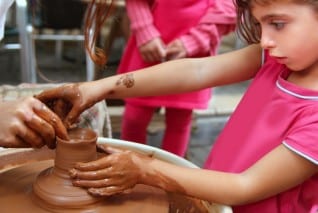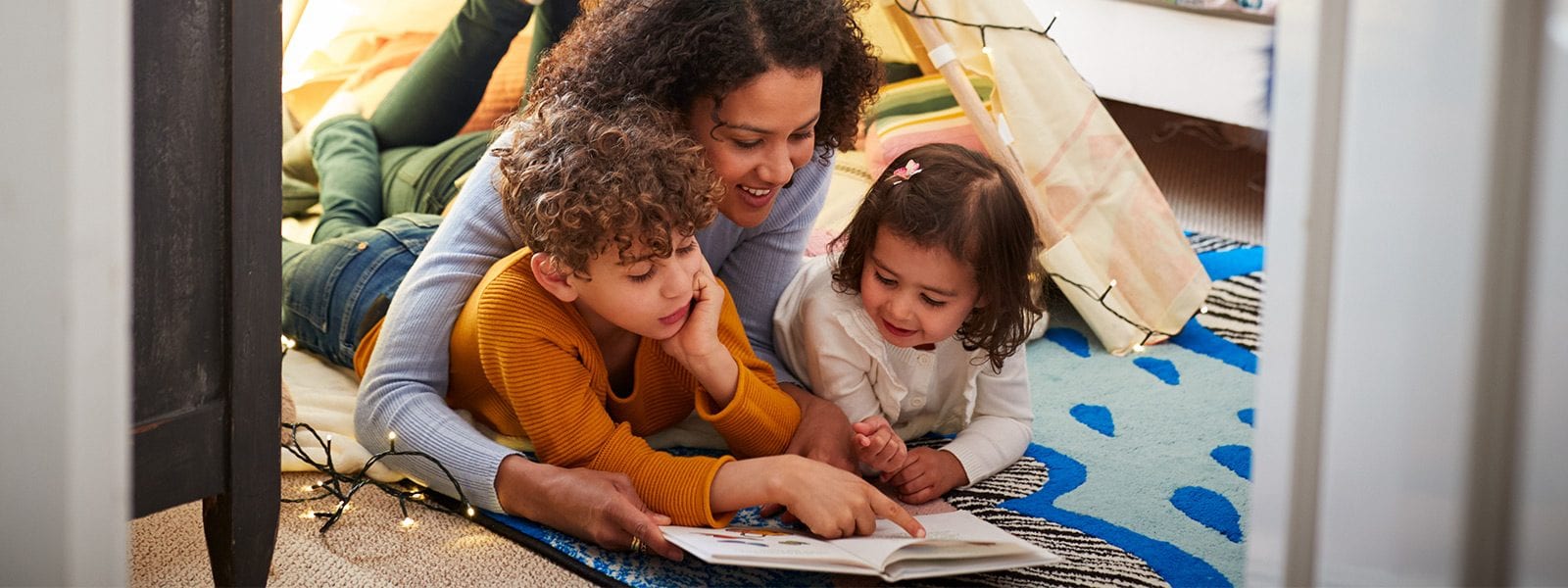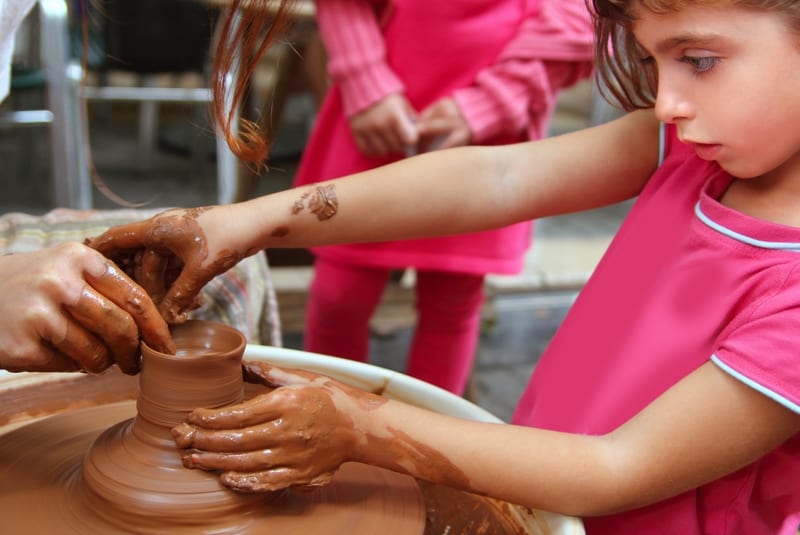For blog subscribers: come to the blog to read this one. We need your input! Details at the end…
I have recently been reading information about children’s education in the 1940’s. Imagine my surprise when I turned one of the pages and saw a picture of several first graders busy at work on a classroom construction project. There was a girl hammering real nails into a board, and a young boy sawing a piece of real wood with a real hand saw, as well as other children busy at various tasks. My immediate reaction was that probably few schools today would ever inspire or allow children to be productive and meaningful in this way. Yet, the article inspired me:
Given obedient children and the right tools and instruction, along with lots of respectful patience, even young children can produce real things. (I think the children in this book were making furniture for their library corner, so they could sit and read and have a good table on which to study their books.) Again, these children young as they were, were being truly productive. Imagine their satisfaction, sense of worth and pride at their accomplishments!
So, my thought, for your consideration is this: I think we may be shortchanging our children as a result of cultural diminishing. In other words, for years and years we have apparently been thinking children can do less and less. And while some may point out that we are simply “protecting” our children’s safety, could it be that it’s easier to not take the time? First of all, we might have to learn how to do various forgotten skills ourselves so that we can pass them on. Then we would have to take the time to fit a meaningful project (such as the library table) once or twice a year into our class schedule. FInally, we might have to reconsider the idea that rote schoolwork and drills are the only important components of education today.

When I read this book of the 1940’s I had an entire new look into the educational procedure. These teachers did accomplish the teaching of reading, writing and arithmetic, but they also provided structured periods of time and encouragement for important hands-on projects that gave children (even as young as six) a sense of being people – people who could make plans and build, imagine and produce, problem solve and make a finished product. These are the real living skills that make use of all the reading, writing and arithmetic facts that the children have been so busy learning.
This kind of learning seems superior to that in which the children get facts, facts, facts yet have no projects where they can meaningfully use them.
Let me give you an example of what I learned. First, second, and third graders are doing class projects:
The subject of transportation might come up and the class would begin to discuss their favorite modes of moving from one place to another. This discussion might lead to someone asking if they could build a boat in the classroom. As the children become excited about the project, life skills begin to happen. Some children are involved in designing the project (and often changing the design as problems occur). Some are involved in painting or decorating, the art of the project. Others take various roles involved in the play-acting of the project…captain of the ship, cooks, crew, etc. There is study to find out about countries to which this boat might sail and what one would expect to find there. (Geography and perhaps history for period work.) In the construction of the project math is used both estimating and actual figuring. Sometimes a project will take monetary resources. The students will need to determine how much will be required and decide how to save for, or fund their work. Perhaps invitations are issued for guests to come and see the project. Handwriting, the language arts skills of proper invitational composition, learning about forms of address, i.e., Mr. – Mrs., etc. Learning about addresses and how they are put on the envelopes, stamps, etc. There is much more, but the point I am trying to make is that these types of projects are important because they use the information that the children have already learned!
Woodworking may not be your strong suit, and you may not have the necessary tools in the right sizes for young children… though I think making such a project as the previously mentioned library furniture would be the highlight of a school year. And what about those children who have the large model horses? They could build a great stable. Or girls who wish to have a real dollhouse could help in building their own.
Whatever kinds of projects you might choose, I’m encouraging everyone to think outside the small box in which our culture has come to view schooling and our young children’s abilities. I feel as if I’ve had blinders taken off and can see the huge potential for learning and creating and working in these young children’s lives which I never realized.
I guess I should have known…children in the 1800’s did meaningful work from the time they could walk. They were taught skills and crafts from the earliest time they could handle them. In a homeschool situation, teaching children to help with specific homemaking tasks is only the beginning. Finding meaningful, productive projects in which your children can take excitement and pride may be an important part of expanding the homeschooling experience. And, homeschool is the perfect place where the relatively low number of students, together with radically dedicated parents, can provide an opportunity to put much more meaningful projects into the school time schedule.
Even in the realm of imaginative play, the youngest children can shine. Give them a large refrigerator box and let them create their own boat, or train, bus, or space shuttle, house or cave. Remember than at this age play is their work.
As we consider this concept, is there even a small pearl of wisdom that we could glean from these “old fashioned” ideas?

I’d love to compile a list of ideas in the comments here! Share an idea your children have done or could do that offers an opportunity to apply the skills we’re tempted to just check off a list.Let’s get enough ideas here so it serves as a reference for us when our busy brains fail us and we need a fresh idea! Come on, let’s play!



 A New Year’s Blessing for You!
A New Year’s Blessing for You!
I love this post! I entirely agree that our kids are not given nearly enough opportunity to learn to do things for themselves in this country. In fact, this reminds me of an article I read some time ago from the New Yorker called “Why Are American Kids So Spoiled?” http://www.newyorker.com/arts/critics/books/2012/07/02/120702crbo_books_kolbert
The article talks about how much more responsibility kids are given at a young age in other cultures, and how much that influences their character. My husband is from Kenya, so I have the benefit of witnessing this contrast first-hand. I love some of the ideas you mention, and would be interested to know what book you were reading if you don’t mind sharing!
As for projects our kids have done on their own, they recently each completed a model vehicle set (building and painting) with very little assistance from dad, and my girls were 5 1/2 and almost 4. They also help regularly with cooking, baking, and household chores. They help us garden as well. I’m determined to find other projects, especially after reading this! 🙂
I am currently helping my 6 year old daughter complete a lap quilt for her 2 year old cousin. We are piecing it on the machine and we will hand quillt it. My daughter is kind of squirelly, so I help her with the machine either running the pedal while she manuevers the fabric or vice versa. She has already practiced handsewing on fabric with a large needle and embroidery floss. I first let her just practice poking the needle through the fabric wherever she wanted (you could easily do counted cross-stitch on plastic canvas for this part), then she practiced following a drawn line. We took these practice pieces and made them into pillows for her dolls.
My husband has also let the kids help with some of the building projects around the house. They smallest was allowed to sort the screws and bolts needed for a project, the next oldest was allowed to get screws started and help hold smaller pieces in place, and my oldest did some major assembly. they did this for a dresser and a set of bunk beds.